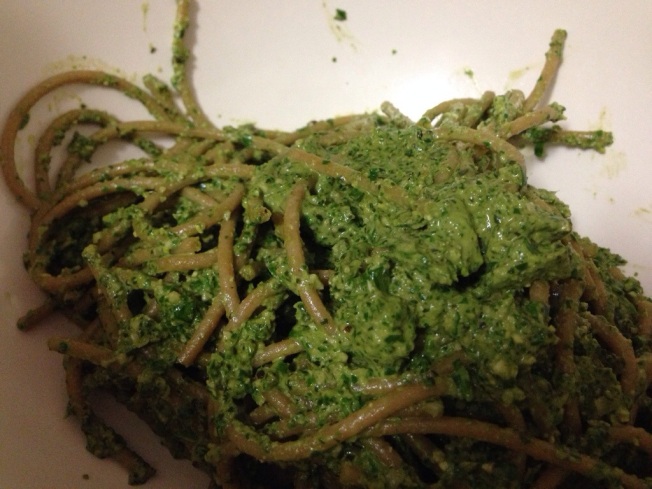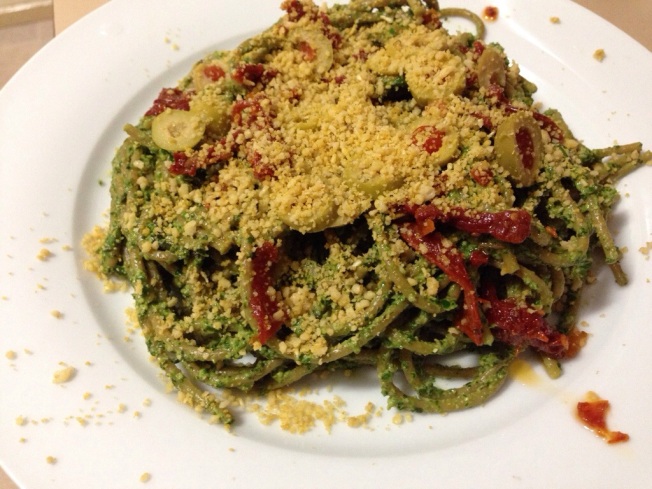I’m sore.
Very sore.
But my legs work. I started a new one week challenge this week. I drove to work on Monday and left my car there (I have use of a fleet car) and walked -slowly- home. I rode to work this morning, knowing that firstly, it would be painful, and secondly, active recovery is always a good option.
My challenge for the week is a no-car challenge. I’m using my car at work only and biking or walking everywhere. This really isn’t difficult since I’m only a few kms from shops and friends, but I figure a bit of light exercise won’t hurt me this week since I’ll be resting and recovering from the weekend.
My thighs hurt the most. It’s the front of my thighs in particular, and not my ankle or my calves. My backs a little sore too but nothing drastic.
I’m trying to feed my body good food at the moment, with the exception of today’s lunch chips because I ran out of time and couldn’t decide what to eat.
Last night was spinach and basil pesto on wholemeal spaghetti.
I didn’t measure, but I threw some fresh garlic, fresh picked basil (mmmm!), baby spinach, cashews, salt and olive oil together in the food processor and added bits and pieces until it tasted good. Because of the spinach it had a milder flavour than my normal basil pesto, but it was pretty good. I also threw in some hemp seeds, for the lovely omega 3s!
To serve, I cooked the pasta, drained it and then tossed the pesto through. I topped it with some olives and sun dried tomatoes as well as “super sprinkles”. Super sprinkles are a Parmesan replacement, but Gary didn’t want to call it “fake Parmesan” so super sprinkles it is! I make it from roughly equal parts pine nuts and nutritional yeast, with a twist or two of the salt grinder, and then whizz it in the food processor. Some recipes say to put it in the oven to dry it out but I don’t worry about it.
This is what it looked like in the end (again I was a little slack on the presentation/photographing!):
Now, before I get murdered by pesto purists, I know this isn’t a traditional pesto. My favorite pesto is actually a fully traditional basil pesto smashed in my mortar and pestle because nothing has ever compared to that flavour. However, this is a delicious and highly nutritious way to get some greens into you!
As a side note, I made sure to have an orange afterwards because the vitamin C aids absorption of the iron from the spinach.
Tonight I’m planning BBQ tempeh and some grilled veggies with a spinach based side salad. Can’t seem to get enough spinach lately!
Mmmmmmmmmmm



